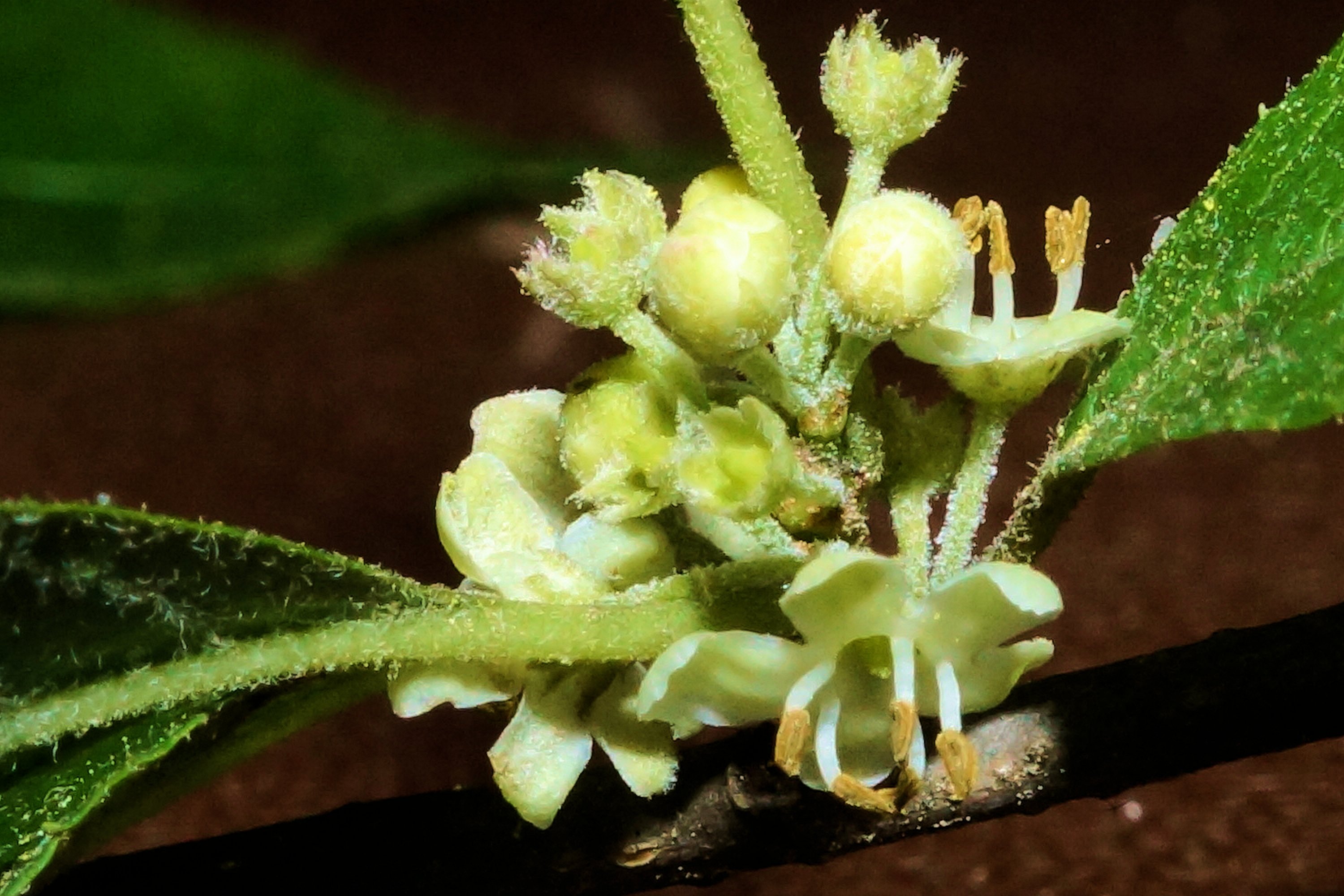(Photo above: flower cluster)

I found some Common Winterberry that was in full bloom today along the Little Patuxent Trail. The scientific name for this member of the holly family (Aquifoliaceae) is Ilex verticillata (L.) A. Gray. Its native range covers Eastern North America from Newfoundland to Alabama on the East, Ontario on the North, to Minnesota and Louisiana on the west.

Common winterberry is dioecious, meaning that male flowers (staminate) and female flowers (pistillate) are found on separate plants. So means that male and female plants both need to be present for pollination to occur. The specimen pictured here is staminate.

Its fruits are red and clustered around the branches, and persist through the winter. The fruits are a favorite to birds.

Common winterberry can be found in wet to dry habitats, but seems to do best in moist soil and full sun.

The sepals of the Common Winterberry are ciliate (have hairs which extend from the margins.) This distinguishes it from the closely related Smooth Winterberry (Ilex laevigata (Pursh) A. Gray), which have no margin hairs on the sepals.

It goes by numerous other common names including Possumhaw, Swamp Holly, Virginian Winterberry, Winterberry Holly, Black Alder Winterberry, Brook Alder, Canada Holly, Fever Bush, Inkberry, Michigan Holly, Coralberry, Deciduous Holly, Deciduous Winterberry, and False Alder.

